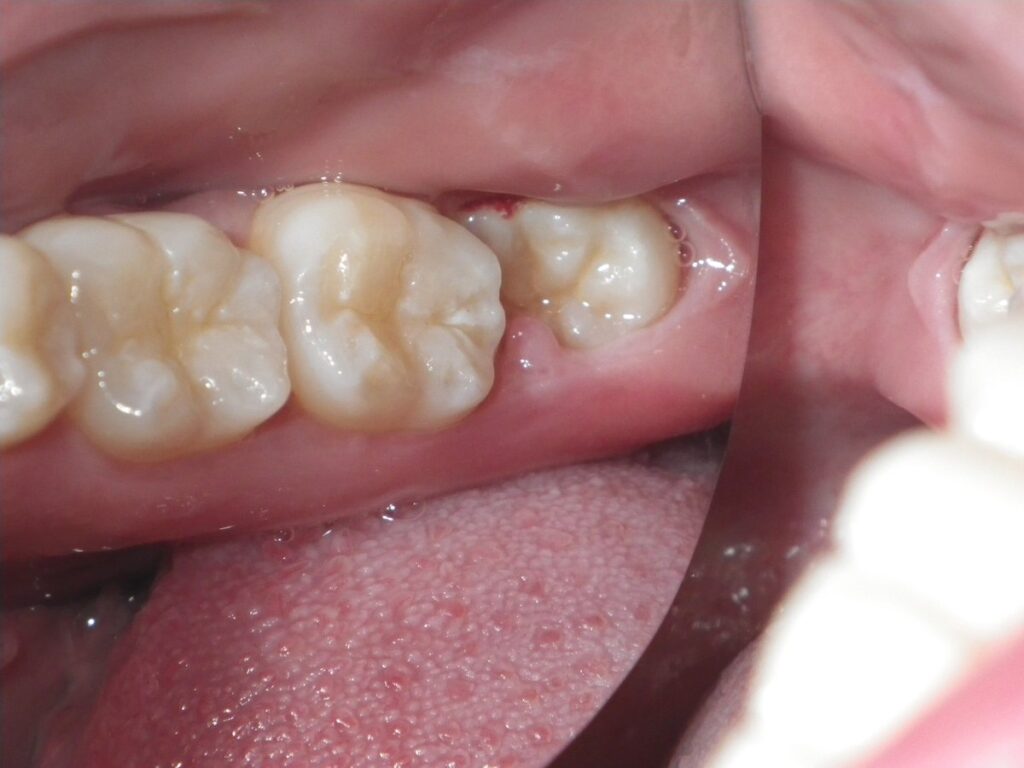Third molar / Wisdom tooth extractions
Third molar / Wisdom tooth extractions
These third molars are the last teeth to develop. While sometimes these teeth may erupt and not cause the patient any issues, more often than not these teeth either don’t fully erupt or aren’t properly aligned. This causes them to become impacted between the gums and the jawbone, which will also affect the health of surrounding teeth.
Wisdom tooth extraction is a surgical procedure to remove one or more wisdom teeth — the four permanent adult teeth located at the back corners of your mouth on the top and bottom.

If a wisdom tooth doesn’t have room to grow (impacted wisdom tooth), resulting in pain, infection or other dental problems, you’ll likely need to have it pulled. Wisdom tooth extraction can be done by a dental surgeon.
To prevent potential future problems, some dentists recommend wisdom tooth extraction even if impacted teeth aren’t currently causing problems.
Wisdom teeth, or third molars, are the last permanent teeth to appear (erupt) in the mouth. These teeth usually appear between the ages of 17 and 25. Some people never develop wisdom teeth. For others, wisdom teeth erupt normally — just as their other molars did — and cause no problems.
Many people develop impacted wisdom teeth — teeth that don’t have enough room to erupt into the mouth or develop normally. Impacted wisdom teeth may erupt only partially or not at all.
An impacted wisdom tooth may:
- Grow at an angle toward the next tooth (second molar)
- Grow at an angle toward the back of the mouth
- Grow at a right angle to the other teeth, as if the wisdom tooth is “lying down” within the jawbone
- Grow straight up or down like other teeth but stay trapped within the jawbone
Problems with impacted wisdom teeth
You’ll likely need your impacted wisdom tooth pulled if it results in problems such as:
- Pain
- Trapping food and debris behind the wisdom tooth
- Grow at a right angle to the other teeth, as if the wisdom tooth is “lying down” within the jawbone• Infection or gum disease (periodontal disease)
- Tooth decay in a partially erupted wisdom tooth
- Damage to a nearby tooth or surrounding bone
- Development of a fluid-filled sac (cyst) around the wisdom tooth
- Complications with orthodontic treatments to straighten other teeth
What to expect after wisdom tooth extraction?
Everyone responds differently to anesthesia. If you had a local anesthetic and feel alert, you might be able to drive home to begin your recovery. You might even be able to go back to work or do your normal activities. If you had general anesthesia or still feel drowsy, you’ll need someone to drive you home.
Most people have little to no pain after surgery. You’ll likely have swelling and mild discomfort for 3 or so days. Your mouth may need a few weeks to completely heal.
Follow your doctor’s instructions for a quicker recovery. Here are some tips for the first 3 days after surgery:
Dos:
- Use an ice pack on your face to curb swelling or skin color changes.
- Use moist heat for a sore jaw.
- Gently open and close your mouth to exercise your jaw.
- Eat soft foods like pasta, rice, or soup.
- Drink plenty of fluids.
- Brush your teeth starting the second day. Don’t brush against any blood clots.
- Take the drugs your doctor prescribes to ease pain or swelling.
- Call your doctor if you have a fever, or if your pain or swelling doesn’t improve.
Don’ts:
- Don’t drink through a straw. Sucking may loosen blood clots that help your mouth heal.
- Don’t rinse your mouth too harshly. Your doctor may suggest rinsing gently with saltwater.
- Don’t eat hard, crunchy, or sticky foods that may scratch your wounds.
- Don’t smoke. Smoking can slow your healing
